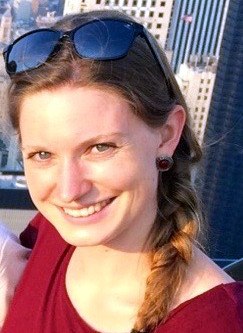Annette Brandel
|
|
Studying pore formation in lipid bilayers
|
Abstract
The bacterium Pseudomonas aeruginosa emerged as a major human opportunistic pathogen during the past decades, maybe as a consequence of its resistance to antibiotics and disinfectants. It is able to cause severe infections of the respiratory and urinary tract, skin and eye, predominantly in immune compromised patients. In addition, P. aeruginosa has a unique ability to cause chronic infections in the lungs of patients with cystic fibrosis, ultimately leading to pulmonary failure and death.
P. aeruginosa has a vast range of virulence factors, amongst them, the two bacterial lectins LecA and LecB, which, by virtue of their sugar binding, contribute to the pathogens’ host specificity and adherence to host cells. These two lectins are found to be mainly intracellular, but also associated with the bacterial outer membrane. Whereas LecA is galactophilic, LecB displays a very high affinity to L-fucose.
Recently, we have demonstrated that the interactions of LecA with the host cell glycosphingolipid Gb3 are sufficient to induce the engulfment of the bacterium in cells. These membrane invaginations could be reconstituted on giant unilamellar vesicles. Furthermore, the absence of one of these two factors leads to a reduction of invasiveness of the bacterium by around 70%, clearly showing that LecA is more than a simple adhesion [1-3].
In the framework of the PhD project, we want to study pore formation and transport processes induced by LecA.
References
[1] S. Aigal, J. Claudinon, W. Römer: Plasma membrane reorganization: A glycolipid gateway for microbes. Biochimica et Biophysica Acta - Molecular Cell Research 2015, 1853(4), 858-871.
[2] T. Eierhoff, B. Bastian, R. Thuenauer, J. Madl, A. Audfray, S. Aigal, S. Juillot, G.E. Rydell, S. Müller, S. de Bentzmann, A. Imberty, C. Fleck, W. Römer: A lipid zipper triggers bacterial invasion. Proc Natl Acad Sci 2014, 111(35), 12895-12900.
[3] A. Novoa, T. Eierhoff, J. Topin, A. Varrot, S. Barluenga, A. Imberty, W. Römer, N. Winssinger: Novel LecA Ligand Identified from Glycan Array Inhibits Host Cell Invasion by Pseudomonas aeruginosa. Angew. Chem. Int. Ed 2014, 53(34), 8885-8889.
Methods
Artificial membrane systems, lipid painting, pore formation, confocal microscopy
Publications
Zheng, S, Eierhoff, T, Aigal, S, Brandel, A, Thuenauer, R, de Bentzmann, S, Imberty, A, Römer, W (2017) The Pseudomonas aeruginosa lectin LecA triggers host cell signalling by glycosphingolipid-dependent phosphorylation of the adaptor protein CrkII. Biochimica et Biophysica Acta - Molecular Cell Research. 1864(7): 1236-45.




